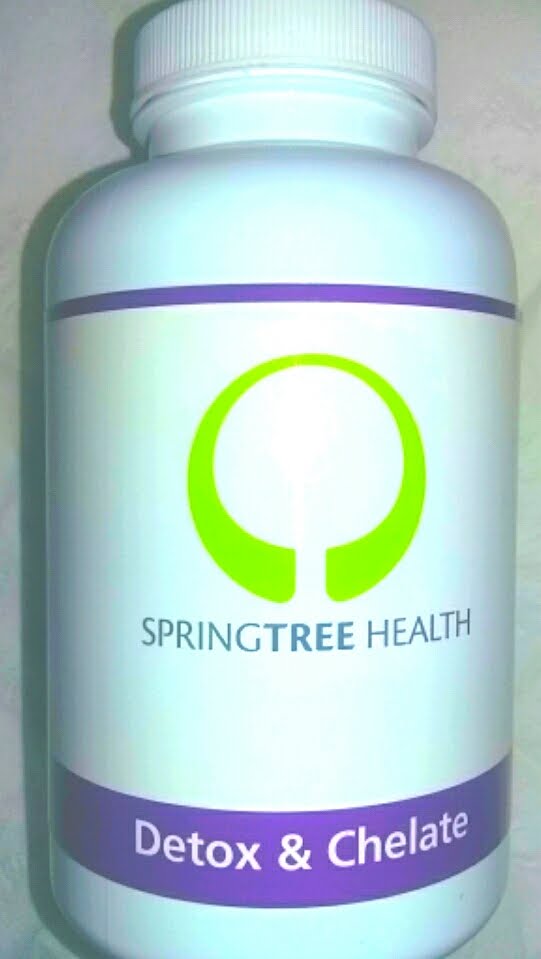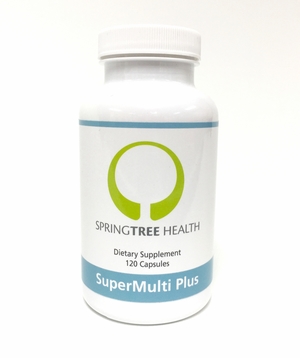
The following article was taken from Dr. Charles B. Simone's website, www.drsimone.com. Dr. Simone is an oncologist and immunologist who has practiced integrative medicine for his cancer patients for 40 years, and runs the Simone Protective Cancer Center. This article talks about the nutritional needs of the cancer patient, and the prevention of cancer through nutrition. I urge all to take serious note of the scientific studies he discusses that prove the importance of nutritional supplementation in the prevention and treatment of cancer.
NUTRIENTS AND CANCER TREATMENT by Charles B. Simone, M.MS., M.D.,
with Nicole L. Simone, B.S.E., Charles B. Simone, II
copyright© 1999 Simone Protective Cancer Center
While thoroughly engrossed in basic science at the National Cancer Institute as a Medical Oncologist and Tumor Immunologist, I found new direction as a result of contacts with cancer patients. One of my first patients was a Vice President of the United States who was dying of malnutrition secondary to his cancer-as do 40% of all cancer patients. Later, a man my own age with a rare cancer asked if I would keep him alive until he saw the birth of his child. Intensive chemotherapy cleaned out the cancer, but he failed to improve. As a last resort, I gave him high doses of antioxidants and other vitamins and minerals that quickly produced a seemingly miraculous, although temporary result. The man saw the birth of his child.
Today's oncology careCancer will emerge as the number one cause of death in the United States by the year 2000. Despite the enormous effort to combat cancer, the number of new cases of nearly every form of cancer has increased annually over the last century. Still worse, from 1930 to the present, despite the introduction of radiation, chemotherapy, and immunotherapy with biological response modifiers, despite CT scans, MR scans, and all the other new medical technology, lifespans for almost every form of adult cancer have remained constant, except cervical and lung cancer. This means, there has been no significant progress in cancer treatment.
Although chemotherapy and radiation therapy continue to have a role in cancer treatment, they produce morbidity. Nutritional modification, including the use of antioxidants and other nutrients, and proper lifestyle factors can dramatically decrease morbidity and side effects of chemotherapy and radiation therapy as well as increase response rates. Some reports have shown that nutritional and lifestyle modification can actually increase survival. It has been proven that chemotherapeutic agents and radiation therapy reduce the serum levels of certain nutrients, especially antioxidants. The decreased levels of these antioxidants result from lipid peroxidation.
Augmenting treatment with nutrientsDo vitamins and minerals interfere with chemotherapy and/or radiation therapy? I am frequently asked this by patients because they have been advised not to take supplements during treatment. The scientific literature has clearly addressed this question:
1. The early clinical studies were performed at the National Cancer Institute using an antioxidant called N-acetyl cysteine that was found to protect the heart from the cardiac toxicity of adriamycin, but did not interfere with the tumor-killing capability of the drug. An antioxidant, dexrazoxane (ICRF-187), protects the heart from the effects of adriamycin without affecting the antitumor effect. Cellular studies, animal studies, and human studies demonstrate that vitamins A, E, C, and K, beta-carotene and selenium, as single agents or in combination, all protect against the toxicity of adriamycin and enhance its cancer-killing effects.
2. In vitro cellular studies and animal studies using vitamins C, A, K, E, D, B6, B12, beta-carotene, selenium, or cysteine as single agents or in combination given concomitantly with chemotherapy, or tamoxifen, or interferon alpha-2b, or radiation, or combinations of these modalities show the same effect: Increased tumor killing and increased protection of normal tissues.
3. Human studies involving over 1,960 patients have been done using single or multiple nutrients in combination with systemic treatment and/or radiation treatment demonstrating that nutrients produce a higher response rate, lower side effects, and even increased survival.
4. An increase in survival for cancer patients is uncommon with any treatment. But an increase in survival has been demonstrated for patients who received vitamin A or antioxidants in combination with chemotherapy or radiation therapy. This finding was observed for patients with myelodysplastic syndromes, breast cancer, gastric cancer, oral cavity cancer, and upper aerodigestive cancers. Patients who were given beta-carotene and anthaxanthin while undergoing surgery, chemotherapy, and radiation lived longer with an increase in disease-free intervals. And antioxidant treatment with chemotherapy and radiation prolonged survival for patients with small cell lung cancer compared with patients who did not receive antioxidants.
5. The effects of one chemotherapeutic agent, methotrexate, can be reversed with folinic acid, which is an analog of folic acid. Folic acid itself does not reverse methotrexate's effects. In order to reverse the effects of methotrexate, folinic acid has to be given in high doses. Folinic acid cannot be obtained over-the-counter. It is only available by prescription.
Efficacy of antioxidantsAntioxidants neutralize harmful chemicals called free radicals that occur in the body and constantly arise from fatty foods, smoking, alcohol, environmental pollutants, toxins, carcinogens, iron, smog, and radiation. Free radicals attack vital cell structures and cause damage contributing to the development of certain disease (i.e., cancer, cardiovascular, arthritis, cataracts).
Antioxidants protect normal cells and other tissues by fighting free radicals and the oxidative reaction that is caused by free radicals. Antioxidant nutrients include beta-carotene, vitamins C and E, selenium, copper, zinc, bioflavonoids, and cysteine. There are now more than 200 studies that shown antioxidants can help decrease the risk of developing cancer.
One of the most recent investigations took place in Linxian, China. Researchers from the Cancer Institute of the Chinese Academy of Medical Sciences teamed up with researchers at the United States National Cancer Institute and studied nearly 30,000 adults, randomized over a five-year period into four different groups receiving different nutrients during that period. Here is a brief summary of the study:
It was the first large-scale intervention trial in a prospective randomized fashion to demonstrate that three antioxidant nutrients together-beta-carotene, vitamin E, and selenium-significantly reduced total mortality (9%) especially from all cancers (13%) and particularly stomach cancer (21%).
These antioxidant nutrients also prevented the risk of cancer in humans.
These antioxidant nutrients substantially reduced the prevalence of cataracts in the oldest patients (aged 65 to 74 years).
These antioxidant nutrients also reduced the mortality from stroke. Many other studies demonstrated similar findings, including the Finland Study, the Switzerland Study, the Hawaiian Study, and studies involving people at high risk for developing endometrial cancer, breast cancer, cervical cancer, small cell lung cancer, oral pharyngeal cancer, and others. All studies show that protection is conferred to those who consume antioxidants and other nutrients.
Studies of pre-cancerous conditionsScores of studies, from all over the world, have shown that antioxidants can decrease the risk of pre-cancerous lesions from developing into a full-blown cancer.
The Linxian, China study investigated 3,300 patients with esophageal dysplasia which is a precursor to developing esophageal cancer. The same team of researchers from China and the United States examined the results of the study, which was an intervention study, the best type of clinical design. The group that received the multiple vitamin-mineral supplement daily for six years had:
lower mortality from esophageal and upper stomach cancers (8%)
lower mortality rate in general (7%)
lower rate of death from cancer in any site (4%)
lower risk of dying of a stroke (38%)
While the duration of this trial was very short (six years) and the doses of the nutrients were far too low compared to other trials, the patients who took the supplements had much better results than the control group of patients who took no supplements. Other studies show that people who have colon polyps, abnormal cervical Pap smears, or other pre-cancerous conditions, all do better and can reverse the trend toward a cancer if they take certain antioxidants and other nutrients.
But what about beta-carotene specifically? There have been reports from the CARET and ATBC studies that beta-carotene increased the incidence of lung cancer in heavin heavy smokers who drank alcohol and were exposed to asbestos. I want to address this issue with the following thoughts:
1. Over 200 studies have demonstrated that beta-carotene is safe and can lower the risk of developing cancer and cardiovascular disease.
2. All intervention studies show that beta-carotene and other nutrients can decrease cancer rates and cancer progression.
3. A total of 22 epidemiological studies that included 400,000 smokers and nonsmokers have shown those who had a high blood level of beta-carotene had a lower incidence and mortality of lung cancer. None of these studies reported any association with an increased incidence of lung cancer. In fact, the reduction in risk was even more pronounced in smokers than in nonsmokers.
4. The principal investigator has publicly said that the findings are too preliminary to discuss and the data were not statistically significant.
5. The smokers in these studies who had high beta carotene serum levels at the start of the study had the lowest incidence of lung cancer.
6. Most of the study participants were alcoholics, and all of them ate a high fat diet – both risk factors dramatically and independently increase the risk of developing cancer..
7. beta carotene did not increase the risk of lung cancer for those who smoked less than 20 cigarettes a day and drank little or no alcohol.
8. To my knowledge, no information was gathered concerning other lifestyle risk factors that also would contribute to a poor outcome.
9. Beta-carotene works most efficiently at the early stages of carcinogenesis, not at the later stages when a cancer is already formed – as was the case with the patients in the CARET and ATBC studies. Cancers are started between 10 and 20 years before symptoms occur or our technology can detect them.
The fact remains, beta-carotene:
is the most powerful antioxidant.
neutralizes singlet oxygen, a powerfully damaging chemical.
enhances immune system function.
is very safe and nontoxic.
It is important to rely on the synergism of all the antioxidants, including the carotenoids, and also the B’s, etc., as well as lifestyle changes to decrease one’s risk of cancer and heart disease. it is foolish to expect that a single nutrient can give the “green light” to continue lifestyle behavior that will cause disease.
ConclusionNutrition and lifestyle factors can profoundly reduce toxic side effects and improve the results of conventional treatments. In a recent study of 50 patients with early stage breast cancer, I evaluated the treatment side effects of radiation alone, or radiation combined with chemotherapy, while the patient took therapeutic doses of nutrients. Patients also followed the Simone Ten Point Plan (see Table 1). The patients were asked to evaluate their own response to the treatment in terms of impacts of treatment on their quality of life. The major rationale behind our nutritional plan is that it contains a well-rounded supply of antioxidants and immune enhancing nutrients. The results of the study were impressive:
1. More than 90% of both groups noted improvement in their physical symptoms, cognitive ability, performance, sexual dysfunction, general well-being, and life satisfaction.
2. Not one subject in either group reported a worsening of symptoms. Patients who follow the Ten Point Plan and use certain vitamins andminerals report few side effects from chemotherapy and radiation therapy. Twenty studies with more than 2,700 patients that investigated lifestyle modification that includes dietary changes, nutrient supplementation, and other lifestyle changes demonstrated a lower recurrence rate and an increase in survival. The patients in these studies had the following cancers: breast, ovarian, cervical, uterine, head and neck, lung, pancreatic, prostate, and bladder.
Cancer patients should modify their lifestyles using the Ten Point Plan, which includes modifying nutritional factors and taking certain vitamins and minerals, especially if they are receiving chemotherapy and/or radiation. The studies indicate that it is important to take the correct nutrients to reduce side effects, enhance conventional therapies, and increase outcomes (table 2).
Table 1
The Simone Ten Point Plan:
NUTRITION. Maintain an ideal weight-lose even 5 or 7 pounds if needed. Follow a low-fat (about 20%), high-fiber (25 gm) diet. Take specific nutrients (see table 2). Eliminate salt, food additives and preservatives, and caffeine.
TOBACCO. Do not smoke, chew, snuff, or inhale other's smoke.
ALCOHOL. Avoid alcohol.
RADIATION. Avoid unnecessary X-rays and use sunscreens when in the sun. Avoid electromagnetic fields.
ENVIRONMENT. Keep air, water, and work place clean.
HORMONES/DRUGS. Avoid all estrogens and unnecessary drugs.
KNOW THE SEVEN WARNING SIGNS OF CANCER. Lump in breast, non-healing sore, change in wart/mole, change in bowel or bladder habits, persistent cough or hoarseness, indigestion or trouble swallowing, unusual bleeding.
EXERCISE.
STRESS MODIFICATION, SPIRITUALITY, AND SEXUALITY.
HAVE AN EXECUTIVE PHYSICAL ANNUALLY.
Table 2
Dr. Simone's recommended nutrients/dosages:
Beta carotene = 20 to 30 mg per day
Lutein = 10 TO 25 mcg per day
Lycopene = 10 TO 25 mcg per day
Vitamin E = 400 to 600 IU per day
Vitamin C = 350 to 6,000 mg per day
Bioflavonoids = 10 to 20 mg per day
Selenium = 200 to 300 mcg per day
Zinc = 15 to 20 mg per day
Copper = 3 to 5 mg per day
Cysteine = 20 to 500 mg per day
Vitamin A = 5,000 to 7,500 IU per day
Vitamin D = 400 to 600 IU per day
Vitamin B1 = 10 mg per day
Vitamin B2 = 10 mg per day
Vitamin B6 = 10 mg per day
Vitamin B12 = 18 mcg per day
Niacinamide = 40 mg per day
Biotin = 150 mcg per day
Pantothenic acid = 20 mg per day
Folic acid = 400 mcg per day
Iodine = 150 mcg per day
Chromium = 125 mcg per day
Until we meet again,
Dr. Judi




















